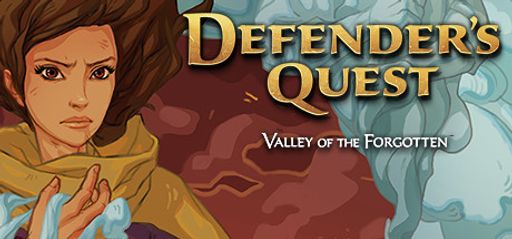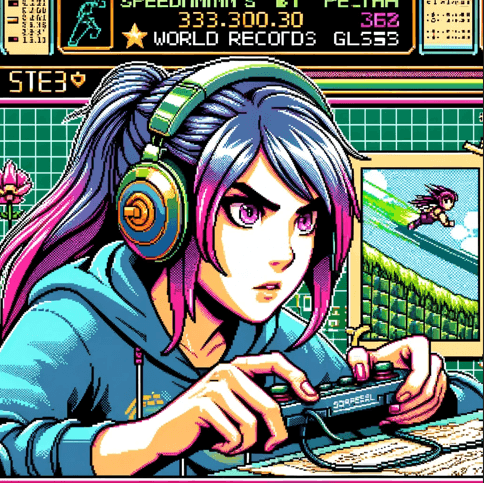 Let’s kick this off! Defender’s Quest: Valley of the Forgotten DX Edition from Level Up Labs, both Developer and Publisher, has ridiculous potential. I love its innovative tower defense meets tactical RPG style. The game offers fast-paced real-time battles that let you pause and give commands. Although technical issues like resolution caps and stability bugs can hold you back, they do not kill the thrill of quick runs. I appreciate the precise timing and optimization tips for speedrunning, and I see some room for improvement that can help even newer speedrunners.
Let’s kick this off! Defender’s Quest: Valley of the Forgotten DX Edition from Level Up Labs, both Developer and Publisher, has ridiculous potential. I love its innovative tower defense meets tactical RPG style. The game offers fast-paced real-time battles that let you pause and give commands. Although technical issues like resolution caps and stability bugs can hold you back, they do not kill the thrill of quick runs. I appreciate the precise timing and optimization tips for speedrunning, and I see some room for improvement that can help even newer speedrunners.
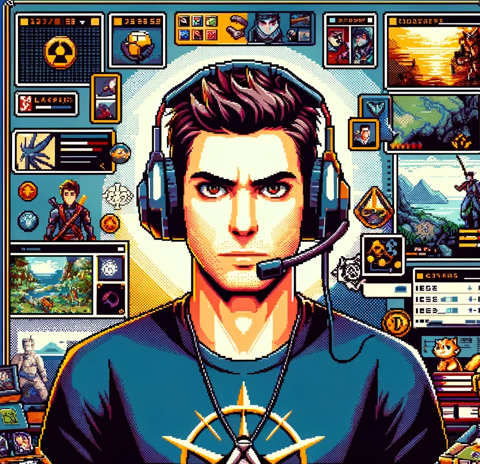 Great start! I must say, I admire how every detail in Defender’s Quest stands out. Its story-driven approach and creative unit progression really add flavor. From painstaking exploration of side quests to collecting every hidden item, this game has surprises in the mix. I noticed that technical glitches and some balance quirks make me grind longer than usual. But I see these as design challenges that add character rather than faults. I enjoy uncovering every collectible, much like I do with classic RPGs.
Great start! I must say, I admire how every detail in Defender’s Quest stands out. Its story-driven approach and creative unit progression really add flavor. From painstaking exploration of side quests to collecting every hidden item, this game has surprises in the mix. I noticed that technical glitches and some balance quirks make me grind longer than usual. But I see these as design challenges that add character rather than faults. I enjoy uncovering every collectible, much like I do with classic RPGs.
 That is exciting to hear, friends. I am fascinated by the game mechanics and the open environment Level Up Labs created. The mix of tower defense and RPG elements gives a fresh adventure feel. I have dug into secret zones and found hidden challenges that resemble open-world exploration. While some technical limitations and outdated design elements can slow progression, they also encourage you to explore every hidden corner. This game definitely keeps me on my toes as I hunt for new adventures.
That is exciting to hear, friends. I am fascinated by the game mechanics and the open environment Level Up Labs created. The mix of tower defense and RPG elements gives a fresh adventure feel. I have dug into secret zones and found hidden challenges that resemble open-world exploration. While some technical limitations and outdated design elements can slow progression, they also encourage you to explore every hidden corner. This game definitely keeps me on my toes as I hunt for new adventures.
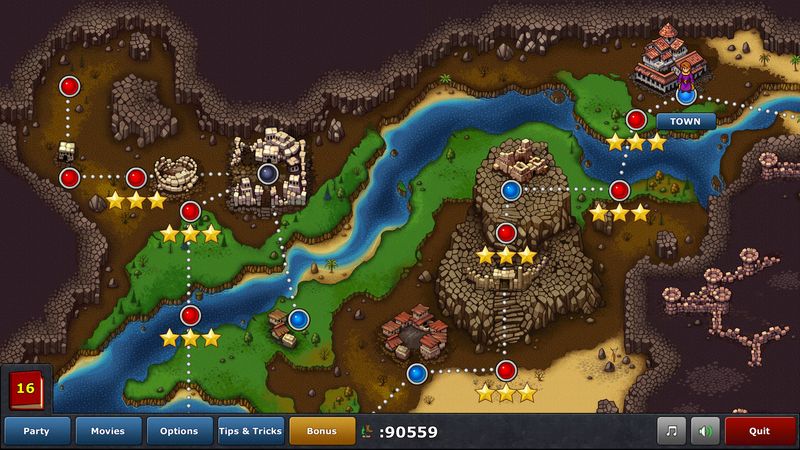
 I agree with everyone here. The tactical depth in Defender’s Quest is impressive. The controls are intuitive and allow creative item usage in battles. I took note of the RPG mechanics that rely on precise stats and leveling. The challenge intensifies during large-scale fights. Yet, there are moments when over-leveling makes combat too easy, which detracts from its skill-based appeal. I appreciate that the game pushes boundaries, much like competitive titles. Understanding every nuance is vital for hardcore play.
I agree with everyone here. The tactical depth in Defender’s Quest is impressive. The controls are intuitive and allow creative item usage in battles. I took note of the RPG mechanics that rely on precise stats and leveling. The challenge intensifies during large-scale fights. Yet, there are moments when over-leveling makes combat too easy, which detracts from its skill-based appeal. I appreciate that the game pushes boundaries, much like competitive titles. Understanding every nuance is vital for hardcore play.
 On gameplay mechanics, I love the adjustable game speed and the pause commands. In particular, these features make real-time tower defense battles exhilarating. They also remind me of the precision in other fast-paced games. Additionally, the combination of strategic positioning and tactical timing makes each run unique. I cherish these elements because they help me optimize my run times. All in all, they truly push the envelope in the tower defense genre.
On gameplay mechanics, I love the adjustable game speed and the pause commands. In particular, these features make real-time tower defense battles exhilarating. They also remind me of the precision in other fast-paced games. Additionally, the combination of strategic positioning and tactical timing makes each run unique. I cherish these elements because they help me optimize my run times. All in all, they truly push the envelope in the tower defense genre.
 The battle system uses individual characters in place of towers. Their level-up trees require you to plan thoroughly. I love exploring all sides of the progression system, even if some branches seem overpowered. The creative mix of RPG and turret mechanics echoes old-school tactical RPGs. I appreciate that Level Up Labs gives us many layers of strategy. Although it sometimes feels grind-heavy, it rewards patient players with depth and replay value.
The battle system uses individual characters in place of towers. Their level-up trees require you to plan thoroughly. I love exploring all sides of the progression system, even if some branches seem overpowered. The creative mix of RPG and turret mechanics echoes old-school tactical RPGs. I appreciate that Level Up Labs gives us many layers of strategy. Although it sometimes feels grind-heavy, it rewards patient players with depth and replay value.
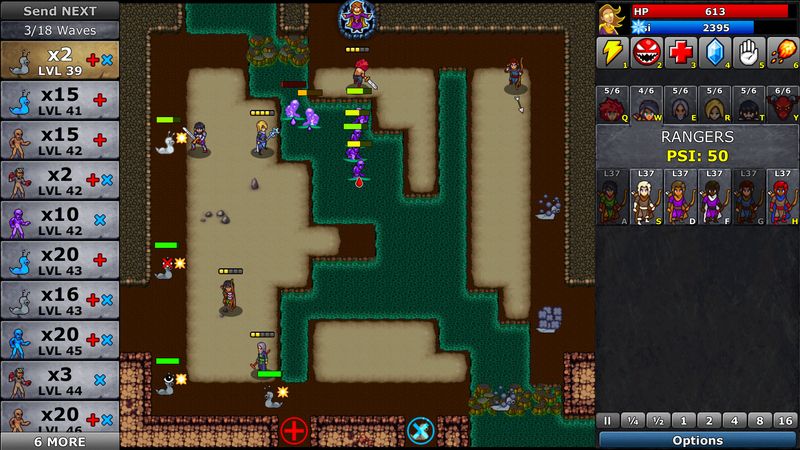
 Now, let’s talk about the story and narrative. The game hooks you with a fast and engaging storyline that feels modern. Written by an English major, the dialogue is witty and auto-skip offers quick replays. The mix of snappy writing and minimal exposition keeps the adventure flowing. I find that these narrative choices immerse you in the game world. The relatable characters and redirection of dialogue carry the spirit of classic RPGs while embracing a modern twist.
Now, let’s talk about the story and narrative. The game hooks you with a fast and engaging storyline that feels modern. Written by an English major, the dialogue is witty and auto-skip offers quick replays. The mix of snappy writing and minimal exposition keeps the adventure flowing. I find that these narrative choices immerse you in the game world. The relatable characters and redirection of dialogue carry the spirit of classic RPGs while embracing a modern twist.
 I concur. The story has engaging twists and solid character backstories. Every unit feels unique and their development ties well with the overall plot. The narrative pace is quick and emphasizes action over filler. Light exposition lets players concentrate on battles. I see hints of influence from titles like Final Fantasy Tactics, yet it stands distinct thanks to personal customization and immersive combat strategy.
I concur. The story has engaging twists and solid character backstories. Every unit feels unique and their development ties well with the overall plot. The narrative pace is quick and emphasizes action over filler. Light exposition lets players concentrate on battles. I see hints of influence from titles like Final Fantasy Tactics, yet it stands distinct thanks to personal customization and immersive combat strategy.
 Moving to visuals and graphics, I enjoy the artful pixel work and smooth animations. The game runs on a well-tuned engine that captures the retro charm with modern flair. Its color palette sets the mood perfectly for each level. Despite a few performance limitations like capped resolution and windowed mode requirement, the artistic visuals and design remain captivating. I appreciate how every battle scene feels crafted to enhance speedrunning moments.
Moving to visuals and graphics, I enjoy the artful pixel work and smooth animations. The game runs on a well-tuned engine that captures the retro charm with modern flair. Its color palette sets the mood perfectly for each level. Despite a few performance limitations like capped resolution and windowed mode requirement, the artistic visuals and design remain captivating. I appreciate how every battle scene feels crafted to enhance speedrunning moments.

 The art direction is a joy for collectors like me. The intricate design of each unit and backdrop speaks of high attention to detail. Smooth animations bring the story to life. Even though today’s display capabilities call for higher resolutions, the visuals hold a timeless quality. Each animation reward is a hidden treasure for perfectionists who love to explore every nook.
The art direction is a joy for collectors like me. The intricate design of each unit and backdrop speaks of high attention to detail. Smooth animations bring the story to life. Even though today’s display capabilities call for higher resolutions, the visuals hold a timeless quality. Each animation reward is a hidden treasure for perfectionists who love to explore every nook.
 The impressive soundtrack also deserves a spotlight. I love how the music changes with the situation and ramps up the tension during epic battles. Some tracks feel like they were inspired by classic RPGs, adding emotional weight to the story moments. The sound effects also tie nicely with the in-game action, such as unit movements and environmental cues.
The impressive soundtrack also deserves a spotlight. I love how the music changes with the situation and ramps up the tension during epic battles. Some tracks feel like they were inspired by classic RPGs, adding emotional weight to the story moments. The sound effects also tie nicely with the in-game action, such as unit movements and environmental cues.
 The audio cues during combat are excellent and help me time my moves perfectly. The soundtrack is composed with care, with each track enhancing different combat scenarios. Clear sound effects provide immediate feedback during intense fights. This attention to sound design is essential in high-stakes battles and tactical challenges.
The audio cues during combat are excellent and help me time my moves perfectly. The soundtrack is composed with care, with each track enhancing different combat scenarios. Clear sound effects provide immediate feedback during intense fights. This attention to sound design is essential in high-stakes battles and tactical challenges.
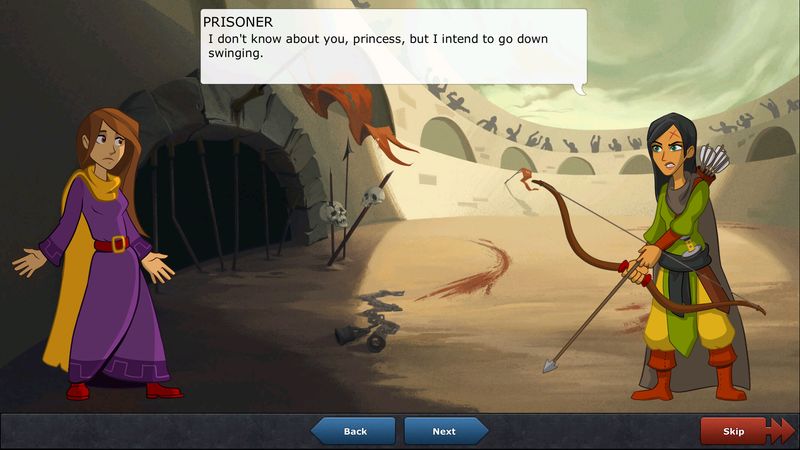
 Let’s not forget the brilliant character designs. Every character in Defender’s Quest has a distinct look and well-defined skills. Their backstories, though sometimes simple, add charm. I admire the diverse designs that let me pick units who fit my high-speed combat style. Representation matters, and Level Up Labs shows effort in making characters both memorable and unique.
Let’s not forget the brilliant character designs. Every character in Defender’s Quest has a distinct look and well-defined skills. Their backstories, though sometimes simple, add charm. I admire the diverse designs that let me pick units who fit my high-speed combat style. Representation matters, and Level Up Labs shows effort in making characters both memorable and unique.
 I love examining characters in detail. Each unit has traits that impact their progression and battle role. Their evolution through skill trees provides a deep customization layer. I find every subtle detail fascinating—even small quirks contribute to the overall lore of the game. Although characters can become overleveled quickly, their unique arcs keep me engaged.
I love examining characters in detail. Each unit has traits that impact their progression and battle role. Their evolution through skill trees provides a deep customization layer. I find every subtle detail fascinating—even small quirks contribute to the overall lore of the game. Although characters can become overleveled quickly, their unique arcs keep me engaged.
 Speaking of challenge level, the game offers a mixture of combat, puzzles, and exploration challenges. Some battles are a breeze while others force you to dive into tactical decisions. Users have mentioned spikes in difficulty that require both fast reflexes and strategic planning. I appreciate the adjustable XP multiplier, even though it sometimes feels like a necessity rather than an option. It makes me feel prepared for more exploration in the game world.
Speaking of challenge level, the game offers a mixture of combat, puzzles, and exploration challenges. Some battles are a breeze while others force you to dive into tactical decisions. Users have mentioned spikes in difficulty that require both fast reflexes and strategic planning. I appreciate the adjustable XP multiplier, even though it sometimes feels like a necessity rather than an option. It makes me feel prepared for more exploration in the game world.
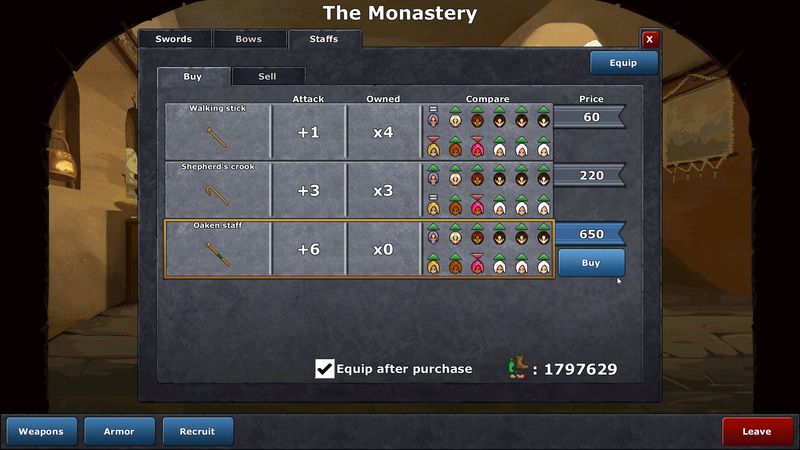
 The game forces you to master both strategy and combat skills. Though some fights seem grind-heavy, each battle presents a unique tactical puzzle. The balance between unit placement and overcoming enemy stats makes each encounter challenging. I like that the game offers accessibility options to help players of various skill levels. This balance is a must for competitive players like me.
The game forces you to master both strategy and combat skills. Though some fights seem grind-heavy, each battle presents a unique tactical puzzle. The balance between unit placement and overcoming enemy stats makes each encounter challenging. I like that the game offers accessibility options to help players of various skill levels. This balance is a must for competitive players like me.
 Replay value is high in this game. The New Game Plus mode, with additional quests and items, extends the life of each run. I like alternating between modes to break through difficulty plateaus. It encourages players to experiment with different strategies every playthrough. This kind of layered replayability is rare in many tower defense titles.
Replay value is high in this game. The New Game Plus mode, with additional quests and items, extends the life of each run. I like alternating between modes to break through difficulty plateaus. It encourages players to experiment with different strategies every playthrough. This kind of layered replayability is rare in many tower defense titles.
 Indeed, the replay value shines with branching quests and many unlockable achievements. I find joy in completing every challenge and exploring alternate story outcomes. This game rewards thoroughness, a point that many classic RPGs emphasize. For completionists, it feels like a never-ending treasure hunt.
Indeed, the replay value shines with branching quests and many unlockable achievements. I find joy in completing every challenge and exploring alternate story outcomes. This game rewards thoroughness, a point that many classic RPGs emphasize. For completionists, it feels like a never-ending treasure hunt.

 I agree. The game’s variety lets you experience both casual explorations and deep tactical revisits. Its content diversity places it alongside favorite open-world adventures. Every revisit reveals more secrets and offers new challenges that keep you coming back.
I agree. The game’s variety lets you experience both casual explorations and deep tactical revisits. Its content diversity places it alongside favorite open-world adventures. Every revisit reveals more secrets and offers new challenges that keep you coming back.
 Final thoughts, everyone? I find Defender’s Quest: Valley of the Forgotten DX Edition to be an intriguing blend of genres. It offers tactical combat, compelling characters, and an engaging narrative with room for customization. Although its technical and balance issues can be improved, the game still stands out for competitive players. Its mix of classic and modern mechanics gives it a distinct voice in the RPG and tower defense scene.
Final thoughts, everyone? I find Defender’s Quest: Valley of the Forgotten DX Edition to be an intriguing blend of genres. It offers tactical combat, compelling characters, and an engaging narrative with room for customization. Although its technical and balance issues can be improved, the game still stands out for competitive players. Its mix of classic and modern mechanics gives it a distinct voice in the RPG and tower defense scene.
 In summary, the game contributes uniquely to its genre with innovative pacing and strategic depth. It resonates well with speedrunners who demand precision and quick execution. Level Up Labs has created a fun mix of tactics and storytelling that appeals to many styles.
In summary, the game contributes uniquely to its genre with innovative pacing and strategic depth. It resonates well with speedrunners who demand precision and quick execution. Level Up Labs has created a fun mix of tactics and storytelling that appeals to many styles.
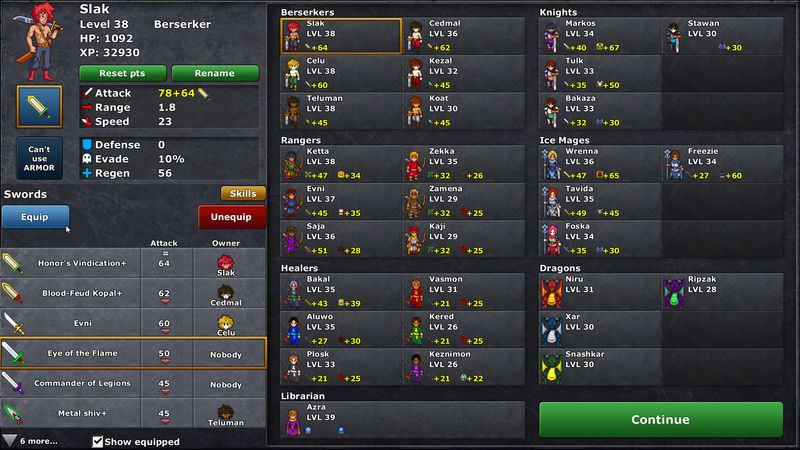
 For those who love detailed exploration, Defender’s Quest offers a rich world to fully uncover. Its intricate side quests and collectibles are a real treat. Penetrating every nook makes for a satisfying experience.
For those who love detailed exploration, Defender’s Quest offers a rich world to fully uncover. Its intricate side quests and collectibles are a real treat. Penetrating every nook makes for a satisfying experience.
 I also recommend trying out similar games like Final Fantasy Tactics. It combines tactical depth with an engaging narrative. XCOM offers strategic combat and vibrant detailing. Plants versus Zombies blends tower defense mechanics with humor. Lastly, Hearthstone delivers strategic decision-making in card battles. These titles offer their own unique twists on tactics and immersion.
I also recommend trying out similar games like Final Fantasy Tactics. It combines tactical depth with an engaging narrative. XCOM offers strategic combat and vibrant detailing. Plants versus Zombies blends tower defense mechanics with humor. Lastly, Hearthstone delivers strategic decision-making in card battles. These titles offer their own unique twists on tactics and immersion.
Add Defender’s Quest: Valley of the Forgotten DX Edition to your games on Steam!

